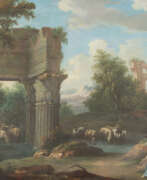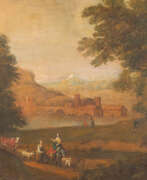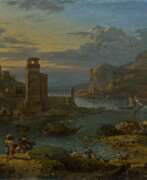Bamboccianti

Bamboccianti
Bamboccianti were a group of genre painters active in Rome from about 1625 until the late 17th century. They comprised mostly Dutch and Flemish artists who carried the tradition of depicting peasant subjects from sixteenth-century Netherlandish art to Italy, often in small cabinet paintings or etchings. Their works portrayed the everyday life of lower classes in Rome and its countryside with a raw authenticity that distinguished them from other contemporary painters.
Their genre scenes (bambocciade), while focusing on the common people, were appreciated among the elite and commanded high prices. The Bamboccianti included artists like Pieter van Laer, known as "Il Bamboccio" for his dwarf-like stature, who was central to the group's formation. Others like Jan Miel and Michelangelo Cerquozzi expanded the genre by including elements of landscape and reducing anecdotal aspects.
The Bamboccianti were subject to criticism by art theorists and academicians for their focus on mundane subject matter, which was considered low within the hierarchy of genres. Nonetheless, they enjoyed the patronage of aristocrats and even influential art collectors of their time, including Cardinal del Monte and Queen Christina of Sweden.
Collectors and experts in art and antiques who appreciate the historical and cultural significance of the Bamboccianti can subscribe for updates on new product sales and auction events related to this key genre. This niche in art history provides a window into the daily lives of 17th-century Roman society and continues to charm and educate on the socio-economic conditions of the time.
| Country: | Italy |
|---|---|
| Start of the period: | 1625 |
| End of the period: | 1690 |






